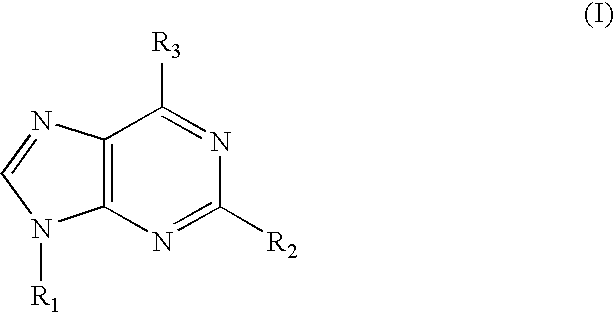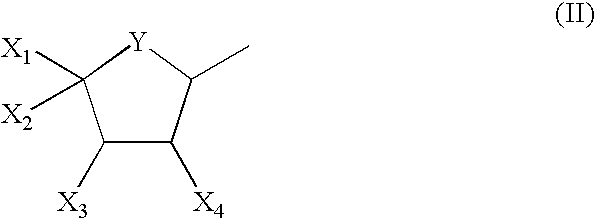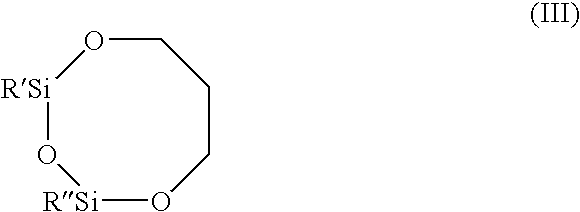Use of an adenosine A3 receptor agonist for inhibition of viral replication
a technology of adenosine a3 receptor and adenosine a3 receptor, which is applied in the field of anti-infectives, can solve the problems of cytolytic destruction of infected cells and eventual death of infected individuals, and achieve the effect of inhibiting replication
- Summary
- Abstract
- Description
- Claims
- Application Information
AI Technical Summary
Benefits of technology
Problems solved by technology
Method used
Image
Examples
Embodiment Construction
[0030]The pharmaceutically or therapeutically “effective amount” for purposes herein is determined by such considerations as may be known in the art. The amount must be effective to achieve the desired therapeutic effect, which depends on the type and mode of treatment. As is clear to the artisan, the effective amount should be effective to reduce the rate of viral replication inside cells, to reduce the level of viral particles in clinical samples, or to obtain an improvement in the condition of an individual having a viral infection, to obtain an improvement or elimination of symptoms or any other indicators acceptable as appropriate measures by those skilled in the art. An example of an effective amount is a daily administration of an A3RAg within the range of between about 1 μg / kg body weight and about 10 mg / kg body weight. Such an amount of A3RAg is typically administered in a single daily dose although at times a daily dose may be divided into several doses administered throug...
PUM
| Property | Measurement | Unit |
|---|---|---|
| surface | aaaaa | aaaaa |
| weight | aaaaa | aaaaa |
| body weight | aaaaa | aaaaa |
Abstract
Description
Claims
Application Information
 Login to View More
Login to View More - R&D
- Intellectual Property
- Life Sciences
- Materials
- Tech Scout
- Unparalleled Data Quality
- Higher Quality Content
- 60% Fewer Hallucinations
Browse by: Latest US Patents, China's latest patents, Technical Efficacy Thesaurus, Application Domain, Technology Topic, Popular Technical Reports.
© 2025 PatSnap. All rights reserved.Legal|Privacy policy|Modern Slavery Act Transparency Statement|Sitemap|About US| Contact US: help@patsnap.com



